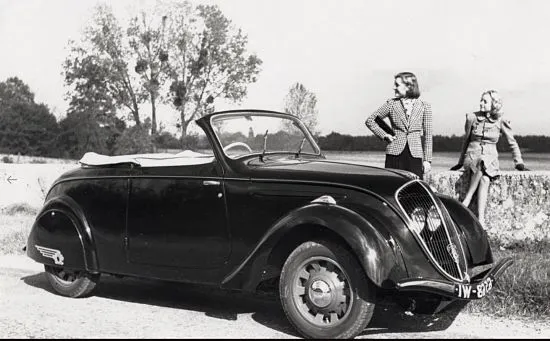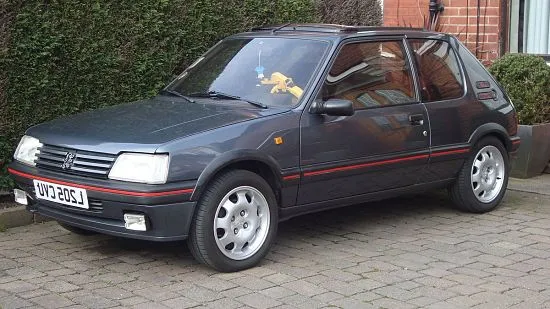-
- Peugeot 172 Tyres
- Peugeot 177 Tyres
- Peugeot 183 Tyres
- Peugeot 184 Tyres
- Peugeot 201 Tyres
- Peugeot 202 Tyres
- Peugeot 203 Tyres
- Peugeot 204 Tyres
- Peugeot 205 Tyres
- Peugeot 301 Tyres
- Peugeot 302 Tyres
- Peugeot 304 Tyres
- Peugeot 401 Tyres
- Peugeot 402 Tyres
- Peugeot 403 Tyres
- Peugeot 404 Tyres
- Peugeot 405 Tyres
- Peugeot 504 Tyres
- Peugeot 604 Tyres
Peugeot Tyres
Classic Peugeot Tyres
On the following pages, Longstone Classic Tyres give classic tyre fitment recommendations for Peugeot cars.
If your Peugeot is not listed, don't panic! Please give us a call on:
01302 711 123
or
Email: sales@longstonetyres.co.uk
Vintage Peugeot Tyres
Longstone Tyres can provide tyres for across the whole Peugeot range, from the 203 to the 604.
Peugeot Tyres
The following list are our recommendations for Peugeots:
- 155 R 400 Michelin X155R400 Michelin X for a Peugeot 203 (Pre-1954).
- 155 TR 15 Michelin X for a Peugeot 203 (Post-1954).
- 145 TR 14 Bridgestone for a Peugeot 204 & 304.
- 165 SR 15 Michelin XZX for a Peugeot 403 & 404.
- 175 HR 14 Michelin XAS for a Peugeot 504 GL, Saloon, Coupe, Cabriolet & Peugeot 604.
- 185 HR 14 Michelin MXV-P for a Peugeot 504 Estate.
Peugeot History
The family firm that preceded the present Peugeot enterprises was formed in 1810, with a steel foundry that quickly expanded into the production of hand tools, kitchen equipment, and, later, bicycles. Émile Peugeot registered for the lion trademark on November 20, 1858. In 1889, Armand Peugeot collaborated with Léon Serpollet to build the company's first automobile steam tricycle, which was followed in 1890 by an internal combustion vehicle powered by a Panhard-Daimler engine.
Armand Peugeot got interested in the car early on and was convinced of its feasibility after meeting with Gottlieb Daimler and others. Léon Serpollet created the first Peugeot vehicle, a three-wheeled, steam-powered car, which was constructed in 1889; only four copies were made. After meeting Daimler and Émile Levassor in 1890, he abandoned steam in favour of a four-wheeled automobile powered by a petrol-fueled internal combustion engine constructed by Panhard under Daimler's licence. With a three-point suspension and a sliding-gear gearbox, the automobile was more advanced than many of its contemporaries.

During World War I, Peugeot shifted its focus to arms manufacturing, becoming a significant maker of weaponry and military equipment ranging from armoured cars and bicycles to shells. The Peugeot 201, the cheapest automobile on the French market in 1929, was the first to use (and be registered as) the subsequent Peugeot trademark: three numbers with a centre zero. In 1931, the 201 was given independent front suspension. Soon after, the Great Depression struck; Peugeot sales fell, but the firm survived. In 1929, Peugeot established the three-digit names with a central 0 scheme. The first digit has always denoted the car's size, while the last digit has always denoted the vehicle's generation.
In an attempt to resurrect its fortunes, the business introduced a new, aerodynamically designed line in 1933. Peugeot debuted the 402 BL Éclipse Décapotable, the first convertible with a retractable hardtop, in 1934. The Peugeot 202, Peugeot 302, and Peugeot 402 were three 1930s vehicles. These vehicles were curvy in appearance, with headlamps hidden below sloping grille bars.
The 2.1-litre 402 went into production in 1935 and remained in production until the end of 1941, despite the Nazi takeover of France. Andrean developed the new Airflow-inspired 302 (which operated until 1938) and a 402-based big model for 1936, which included a vertical fin and bumper, as well as the first high-mounted taillight. From 1938 through 1942, the entry-level 202 was constructed in series, and roughly 20 further examples were built from existing supplies in February 1945. Peugeot's sales increased to 52,796 in 1939, trailing only Citroen. Regular manufacturing resumed in mid-1946 and lasted until 1949.

With the 202, the business began automobile manufacturing in 1946, producing 14,000 units. Peugeot developed the Peugeot 203 in 1947, which included coil springs, rack-and-pinion steering, and hydraulic brakes. The 203 achieved new Peugeot sales records and was produced until 1960.
The Peugeot 403 was a successful vehicle released in 1955. It sold one million units with a 1.5-litre engine by the conclusion of its manufacturing run in 1962. In 1958, the business began selling automobiles in the United States, and in 1960, it released the Peugeot 404, which had a 1,618 cc engine angled to 45°. The 404 proved tough enough to win four times in the East African Safari Rally. More models followed, several of which were designed by Pininfarina, such as the 504, one of Peugeot's most recognisable models. Peugeot, like many other European manufacturers, developed its partnership with other companies; it began working with Renault in 1966 and Volvo in 1972. This collaboration resulted in the creation of the V6 PRV engine, which was initially built in 1974.
Peugeot purchased a 30% stake in Citroen in 1974 and took over the firm entirely in 1975 after the French government provided substantial sums of money to the new corporation. The combined parent company was renamed PSA Peugeot Citroen, with the goal of maintaining independent identities for the Peugeot and Citroen brands while pooling engineering and technical resources. Peugeot therefore briefly possessed the Italian Maserati brand before selling it in May 1975.
Peugeot introduced the popular Peugeot 205 supermini in 1983, which is majorly credited with bringing the company's misfortunes around. The 205 was the best-selling car in France on a regular basis, and it was also quite popular in other countries of Europe, notably the United Kingdom, where sales frequently exceeded 50,000 units per year by the late 1980s. It received praise for its aesthetics, ride, and handling. It was sold in numerous markets until 1998, coinciding with the release of the 106 in 1991 and stopping manufacturing with the launch of the 206, which was also a major success in Europe.

